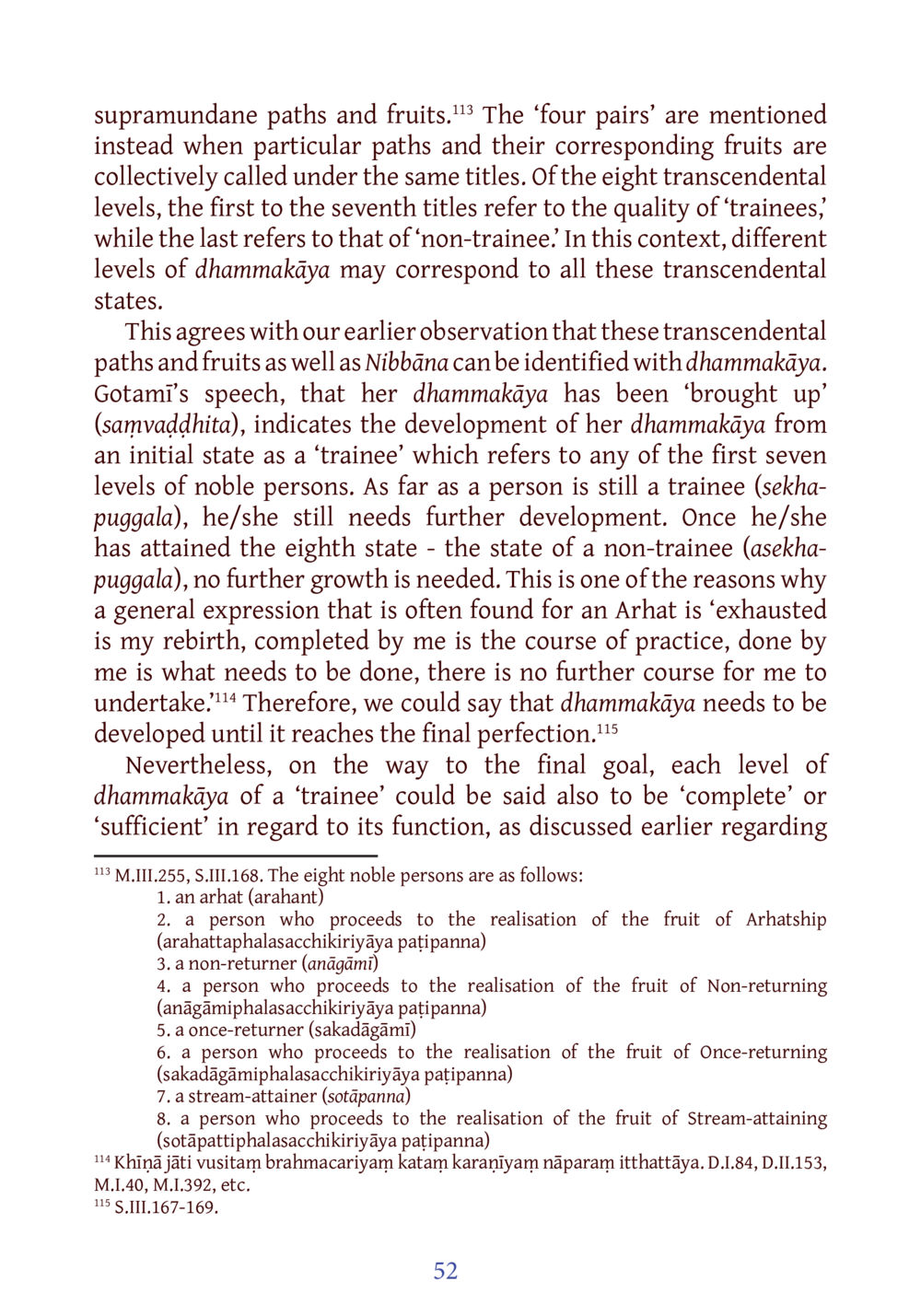Supramundane Paths and Fruits in Dhammakāya : หน้า 73/141
DIRI Journal : หน้า 73/141 Exploring the connection between supramundane paths, fruits, and the development of dhammakāya across different levels of trainees.
3 ครั้ง

สรุปเนื้อหา
The text discusses the different transcendental levels of dhammakāya, highlighting the distinction between trainees and non-trainees. The first seven levels correspond to qualities of trainees, whereas the eighth signifies the attainment of an Arhat, indicating no further growth is necessary. The term ‘dhammakāya’ is closely linked with the concepts of Nibbāna and the path towards final perfection. Gotami’s reference to her dhammakāya's development signifies progress through the initial levels, stating that once a person reaches the final state, they have no further courses to undertake. This journey, while aimed at ultimate perfection, sees each trainee's dhammakāya being functionally complete at their respective levels.
หัวข้อประเด็น
-Supramundane Paths
-Dhammakāya Levels
-Trainees vs Non-Trainees
-Nibbāna and Arhat
-Development of Dhammakāya
ข้อความต้นฉบับในหน้า
หน้าหนังสือทั้งหมด













































































































































